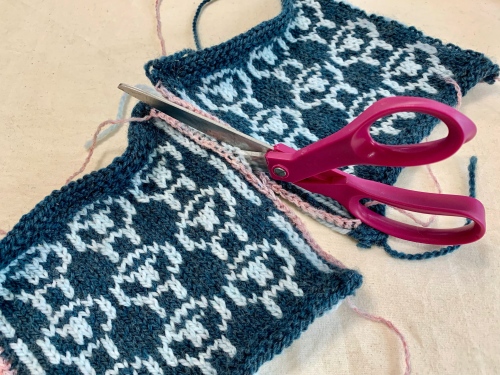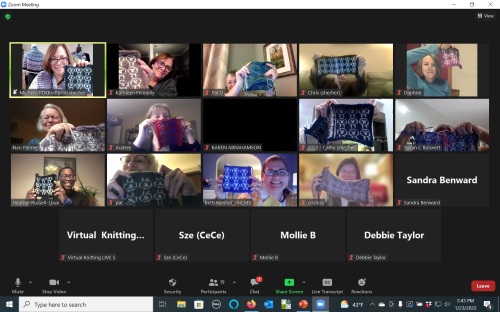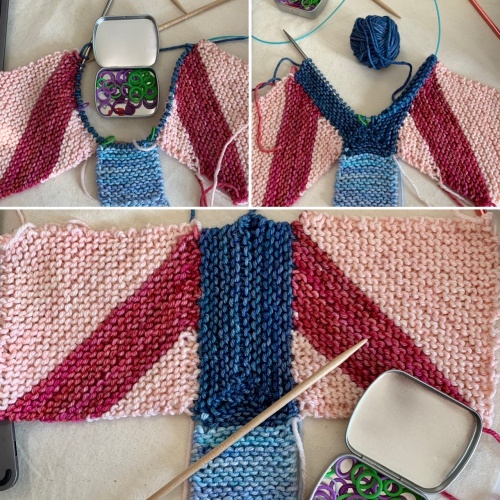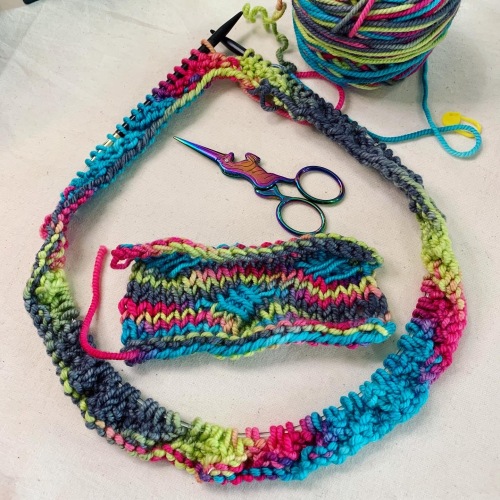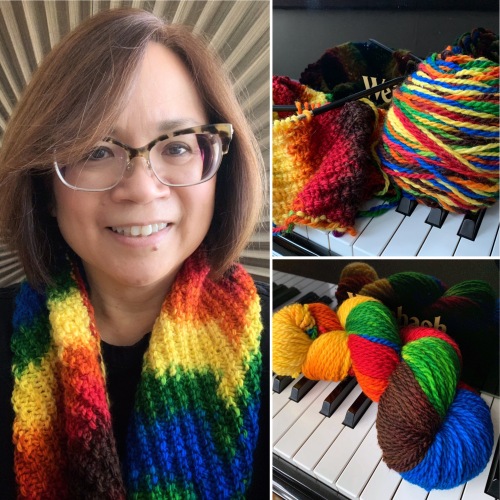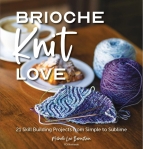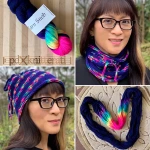I finished my Planned Pooling cowl. It was an adventure!

I started by trying to stack the colors exactly. Then I loosened my gauge for a bit to get the colors to veer to the right (because the colors were starting earlier than before). Of course I had to veer back to the left, by knitting a little tighter for a bit. You don’t have to change gauge for the whole round, just enough to get the first stitches of the previous stacking to change. But you do have to keep checking to see what your colors are up to. Eventually I decided to stop paying attention and just let the colors dance, since I knew that they would more or less stack.

If you want matching cast on and bind off edges, you can use a provisional cast on, and then use your favorite bind off on both edges. The bind off colors won’t match the knitting exactly; binding off uses more yarn than a regular round of knitting. Since the colors weren’t going to match, I didn’t feel that fussy, so I used a long tail cast on and the usual bind off.

I ran out of yarn before the end of the bind off. Oops. I did have a little extra yarn left over from an overly cautious long tail cast on, so that saved the day.

Biscuit helped.
What can you do in real life if you run out of yarn, and there isn’t more? If you don’t need a stretchy edge, you can bind off without knitting. I know, wut? Slip the stitches instead of knitting them, like this.
Slip one stitch knitwise. *Slip another stitch knitwise. Lift the right stitch over the left stitch and off the right needle. Repeat from * to last stitch. Using a yarn needle, run a piece of yarn through last stitch and sew in ends.
This would have worked fine for my cowl, since a small area of of less stretchy edge wouldn’t have been too troublesome. But I wouldn’t have wanted it for the entire bind off. Not bad in a pinch, though!
Final thoughts on planned pooling. Well, it’s interesting! It’s kind of like a dance. I’m used to deciding what the yarn is going to do. Even when dancing, I’ve always been a back-leader! In planned pooling, the yarn is the leader and decides the size of the project because of the color repeat. This cowl is 32″ in diameter, which is kind of an in-between length for me. It’s 6″ tall, because that’s what one skein of this yarn made.

(DH and I are in a social swing dance class; he’s learning to lead and I’m learning to follow.)
I’d love to try making argyles, but realistically I know that I like to multi-task while knitting. That means I don’t like looking at my knitting all the time to make sure my tension is even and the colors are stacking properly. But it was a fun experiment. I’m thinking of designing a class on simple planned pooling. What do you think? Do you want to know just a bit about it? I think of it as party trick knitting! I do like knowing a little bit about a lot of techniques. Planned pooling was on my bucket list for this year, so I’m starting off with a bang!
For now I’ll say thank you to my project (very KonMari), and get on to my next project, which is…brioche!









